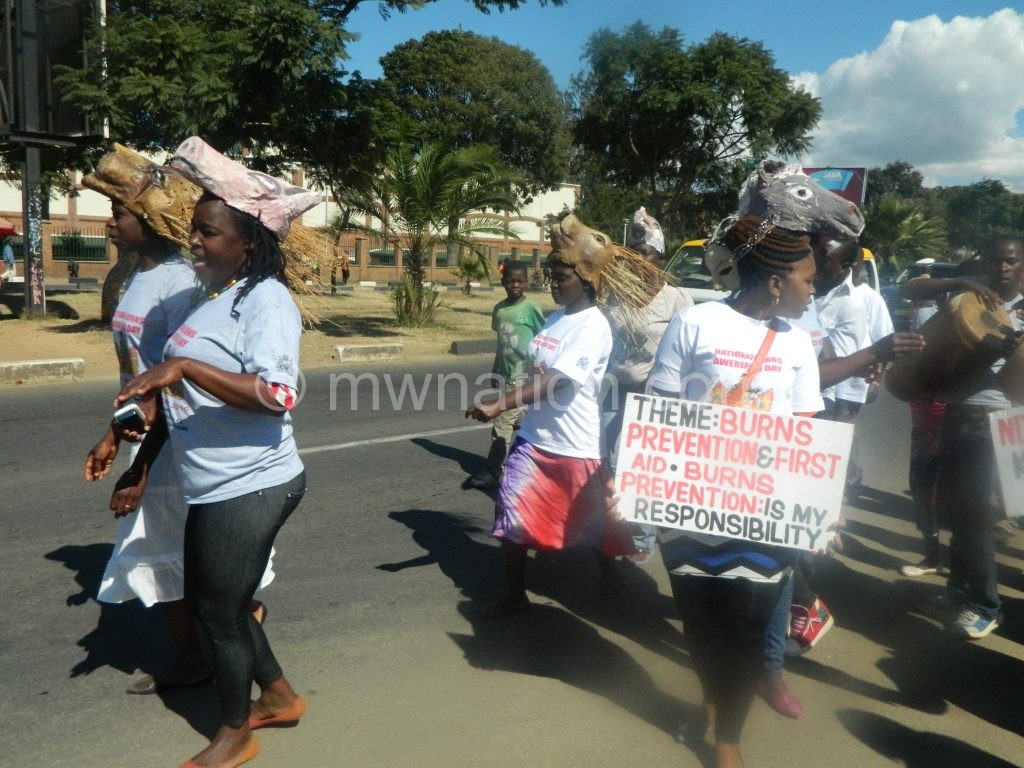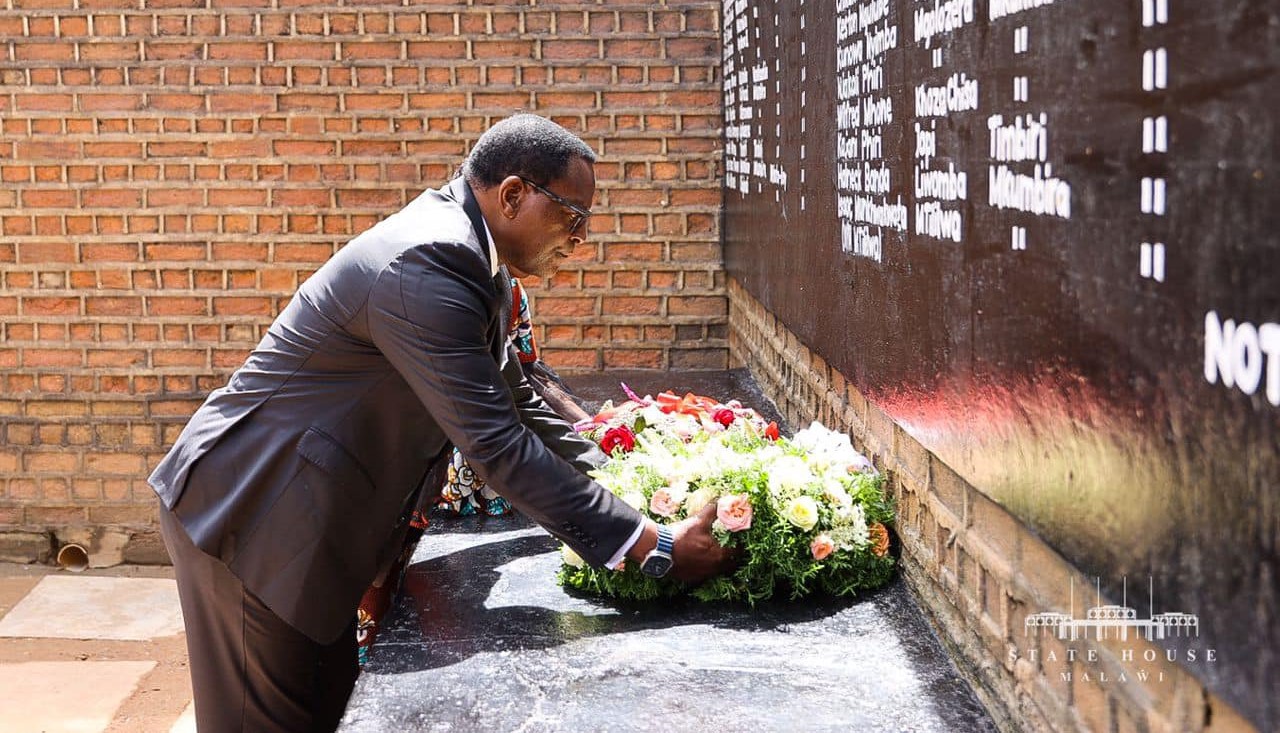Integrating arts into community
With terrifying and intriguing masks and other eye-catching artifacts on their heads, Nanzikambe Arts’ artists led the procession of campaigners against skin burns last Thursday.
The parade on Blantyre’s Chipembere Highway which started from Kamuzu Upper Stadium to Kanjedza Primary School ground attracted thousands of onlookers.

Chipembere Highway
The event turned to be a participatory experience where motorists, pedestrians including other people on board, became the audience.
Nanzikambe artists swayed their hips, gyrated and in acrobatic trance danced to live music which was being performed by a band on a moving lorry.
While kids and adults mobbed the moving lorry to catch a glimpse of the dancing troupe, Nanzikambe’s mission was complete. They were on a mission to drive home health messages on skin burns.
The songs being played, the T-Shirts they wore and the placards that the campaigners carried, all talked about skin burns.
Organisers of the event said the arts are a powerful weapon for change in society because they do not only serve purposes of entertaining but also educating and informing the masses in order to create an informed society.
That is why involvement of Nanzikambe, musician Ben Mankhamba and Village Cultural Troupe on National Burns Awareness Day parade helped to drive the message home about skin burns and challenges people face when they have a burn incidents.
The national burns awareness day, this year was commemorated under the theme “Burns Prevention is my responsibility” and it was specifically designed to create awareness on burns, fire and life safety in general to masses.
According to Dr Tilinde Chokotho, a plastic surgery technician at Queen Elizabeth Central Hospital (QECH) in Blantyre most people are not aware how to prevent fires that may lead to burns.
“We believe that when people are informed about a particular issue such as how to prevent fire accidents in the home, they contribute to the development through taking measures against accidents and leading healthier lives.
“Therefore, the National Burns Awareness Day is an excellent opportunity to educate the masses on their right to health,” he said.
Chokotho said they believed that in using artists the message would reach many people.
His sentiments are shared by Thomas Reekie, a plastic surgery registrar from Scotland. He was part of the burns campaign in Blantyre on Thursday.
He said it was important to use artists as media in raising awareness of the day and burns in the country.
“We value the power of arts in putting the message across to the masses on prevention of burns,” he said.
Commenting on the power arts in the process of health care, Zindaba Chisiza, a theatre lecturer at Chancellor College, said theatre is a powerful advocacy tool.
He, however, cautioned that since the establishment of multiparty in 1994, which allowed for the establishment of many non government, organisations (NGOs) and the emergence of HIV, some NGOs are abusing cash-strapped Malawian performers to make theatre that promote their agenda.
“I am aware that Ezeki ndi Jakobo promoted a lot of NGO work. However, what ended up happening is that some artists thought that getting NGO money was easier than waiting for gate collections.
“Since then many artists have abandoned making theatre for theatre’s sake and are busy doing NGO theatre work for economic survival. The few professionally trained graduates from Chancellor are also heading into NGO theatre work for the same reason,” said Chisiza.
But for Nanzikambe Arts it was all about advocacy since burns of late are a serious challenge to the health care system in Malawi.
According to Dr. Chokotho, Qech’s burns unit sees about 4 500 out-patients annually of which about 1 000 are new patients.
“We thought it wise to create the awareness on burns in Blantyre because 75 patients, which represent 28 percent, most of whom had the larger burns, died in 2014. The current mortality rate is about 15 percent.
Current statistics further indicate that about 75 to 80 percent are burn victims which translates to about 800 new ambulatory burn patients each year,” said Chokotho.
He added that there were 270 admissions of which 50 percent were children of under-five, and 70 percent of under the age 16, whereas, 14 percent of patients had epilepsy.
The major causes of burns are mainly fire (44 percent), hot fluids (40 percent) while hot porridge stood at 10 percent. There were also four electrical injury patients.
“About 50 percent had more than 10 percent of their body surface burnt,” he said.
The Burns Unit at Qech is one of the two referral centres for burns in Malawi. It was established in 1993. Currently, it has 28 beds. Another referral is at Kamuzu Central Hospital (KCH) in Lilongwe.
Chris Nditani of Nanzikambe Arts says when people think of art, they think of entertainment only yet there is more behind it.
“Essentially, the process of creating artwork such as contemporary dance or play serves purposes of both educating and entertaining. It can also be used to raise awareness on topical issues that affect people in their daily lives,” he says.





